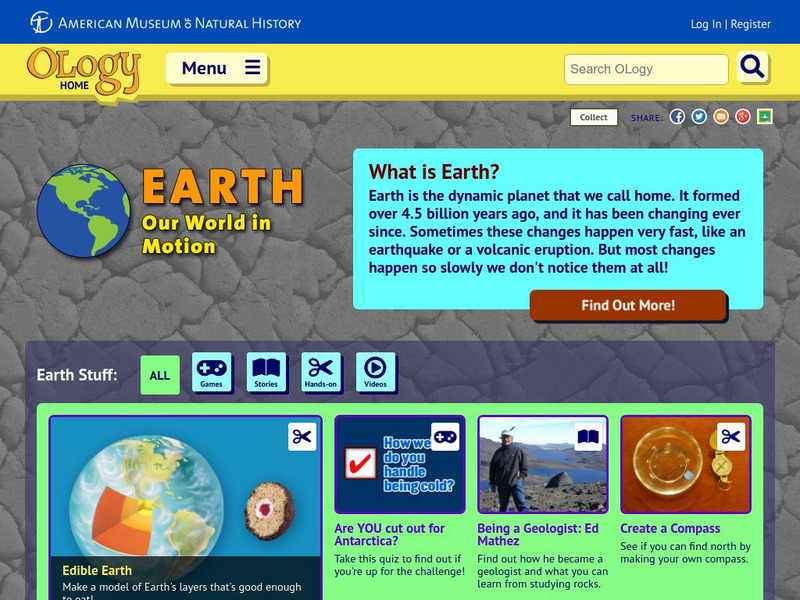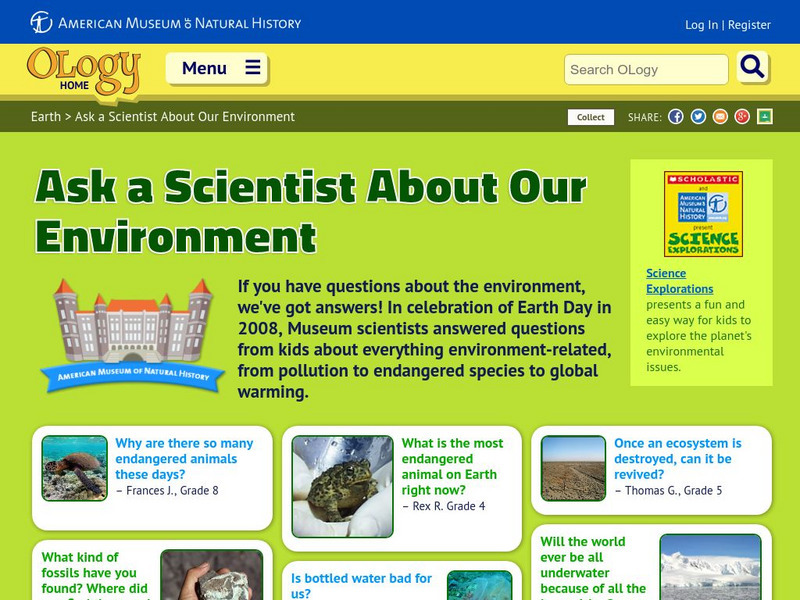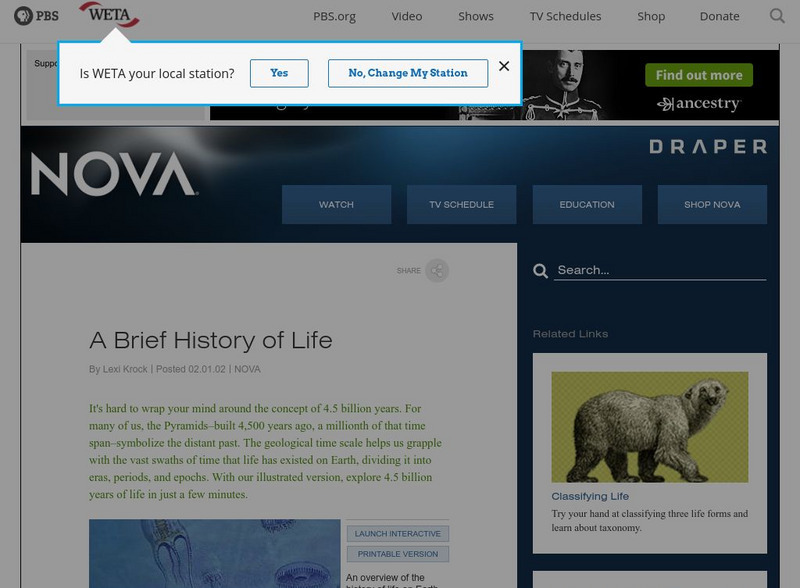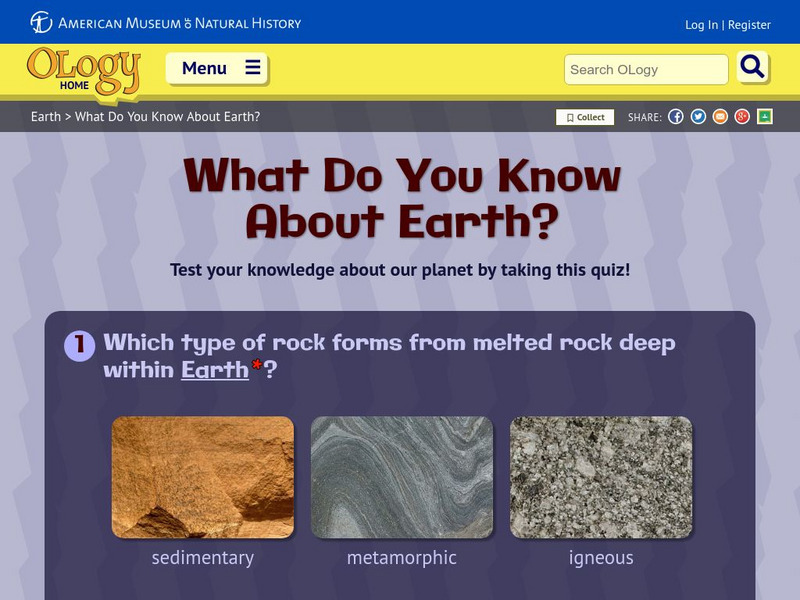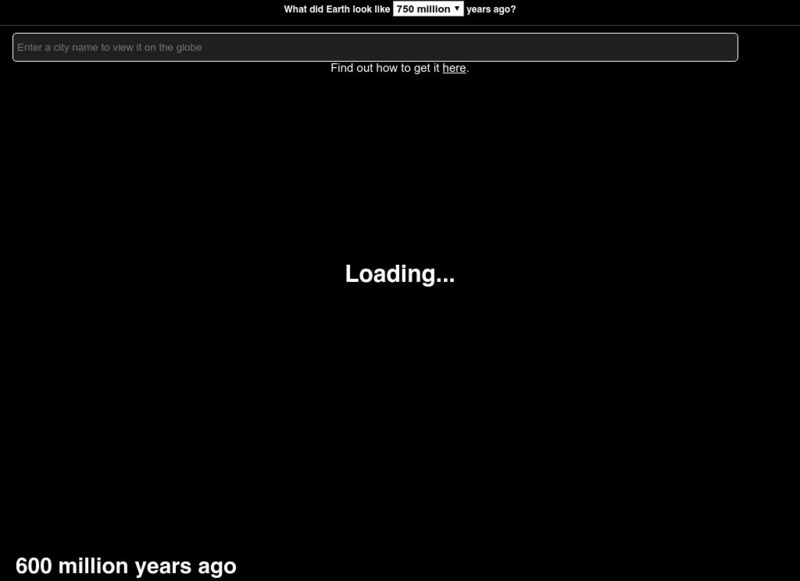Other
Planetary Society: Relative and Absolute Ages in Histories of Earth and the Moon
A lengthy scholarly article that discusses the geologic time scale, its history of development, age-dating events that occurred in different eras, and how absolute and relative dating are used to assess the ages of the Earth and Moon....
American Museum of Natural History
American Museum of Natural History: O Logy: Earth: Our World in Motion
This resource is a place for learning all about the Earth--the Earth's layers, its history, rocks and minerals, and interesting Earth science facts and discoveries. Explore, ask questions, find information, and meet American Museum of...
Other
Teaching the Jah: Earth Day and the Environmental Movement
As part of a larger lesson plan on the the environment and the environmental movement, this lesson focuses on the movement as part of a larger emphasis on social movements in the 1960s. Find information about the history of Earth Day,...
Howard Hughes Medical Institute
Hhmi: Bio Interactive: Paleoclimate: A History of Change
Learn about the history of Earth's climate in this Click and Learn. Learn how many factor control Earth's climate. Specifically, examine two of the most important factors: solar radiation and the composition of Earth's atmosphere.
Digital History
Digital History: The Earth First, 1960's
This excellent resource provided by Digital History contains a wealth of information on the environmental movement of the 1960s in America, as well as the rest of the century.
Nine Planets
The Nine Planets: Earth Facts
Find lots of information about our planet Earth here. Covers basic facts, Earth's history, layers of the Earth, plate tectonics, composition of the atmosphere, Earth's magnetic field, and some facts about our moon.
PBS
Pbs Learning Media: The Lowdown: Brief History of the First Earth Day and What We Can Learn From Its Success Lesson Plan
Earth Day grew out of the environmental movement in the late 1960s in response to a series of environmental disasters that took lives, marred natural beauty and threatened animal species. An estimated 20 million Americans participated in...
BBC
Bbc Earth: The 25 Biggest Turning Points in Earth's History
From the birth of a planet to the evolution of the human race, interactive details the 25 biggest milestones that shaped Earth's history
American Museum of Natural History
American Museum of Natural History: O Logy: Ask a Scientist
A browsable collection of environment-related questions posed by elementary- and middle-school students to the scientists of the American Museum of Natural History in honor of Earth Day. Great questions and great answers.
PBS
Pbs Newshour Extra: What Does Earth Day Mean Today?
This article explains what Earth Day is and why it was founded. It also presents criticisms of the holiday. Includes suggestions for things we can all do to take care of the Earth.
Science Education Resource Center at Carleton College
Serc: Earth Exploration Toolbox: Cool Cores Capture Climate Change
A collection of activities which provide background for educators and learners on the role of sediment cores in revealing the climate change history of Earth.
Encyclopedia of Earth
Encyclopedia of Earth: Climate Change: Past History
A collection of articles on methods used to investigate changes in processes that are, and have been, affected by climate. It also covers the discoveries that have been made about climate change in the Earth's recent and ancient past.
PBS
Nova: A Brief History of Earth
This timeline is a good resource if you are looking for brief descriptions of the geologic periods. Descriptions include pictures of common organisms for each period and the range of time covered by each period.
Other
Digital Library for Earth System Education (Dlese)
This resource provides materials for teachers on a huge array of topics. Search site by topic, grade level, and desired output (such as lesson plan, case study, assessment or tutorial). Site is focused on earth science, geography, and...
CK-12 Foundation
Ck 12: History of the Periodic Table
[Free Registration/Login may be required to access all resource tools.] In this online tutorial students will begin to explain the use of chemical and physical properties in the historical development of the Periodic Table. They will be...
Science Struck
Science Struck: How Was the Earth Created
This resource gives a detailed explanation of the stages that the Earth and the solar system went through beginning with their origins in the Big Bang up to the present time.
American Museum of Natural History
American Museum of Natural History: O Logy: What Do You Know? Earth Science
Take a ten question quiz on the Earth's surface.
Read Works
Read Works: Passages: "The Rise of Oxygen in the Earth's Atmosphere"
[Free Registration/Login Required] The article "The Rise of Oxygen in the Earth's Atmosphere" from the American Museum of Natural History focuses on when the rise of oxygen in the earth's atmosphere began. A Step Read, a question set,...
Untamed Science
Untamed Science: Biology: Evolution: History of Life: The Cambrian Explosion
Learn about the Earth's evolutionary history during the Cambrian period. [3:25]
BBC
Bbc: Earth: Tardigrades Return From the Dead
Tardigrades are ancient, fascinating creatures that can survive conditions that would kill most life forms, including extreme heat and absolute zero, extreme pressure and a vacuum, and deadly radiation. They can even survive being...
American Museum of Natural History
American Museum of Natural History: Plates on the Move
Explore how plates move with this interactive site. Students choose locations on the map of Earth to see if the tectonics plate are slipping, spreading, colliding, or subducting.
Untamed Science
Untamed Science: Biology: Evolution: History of Life: Origins
Learn about the scientific hypotheses of the origin of life on Earth. [5:55]
Natural History Museum
Natural History Museum: The Oceans
This online exhibit from the Natural History Museum is home to ten units covering various aspects of the world's oceans including frozen oceans, deep oceans, barnacles, coral reef, deep-sea fish, sponges, vents, and more.
Other popular searches
- Earth History
- Earth's History
- Earth History Activities
- Layers of Earth History
- Earth History Timeline
- Earths Geologic History
- Earth History Soil
- Earth History Review
- Earth History Time Line
- Earths History
- Moon and Earth History
- Ancient Life on Earth

